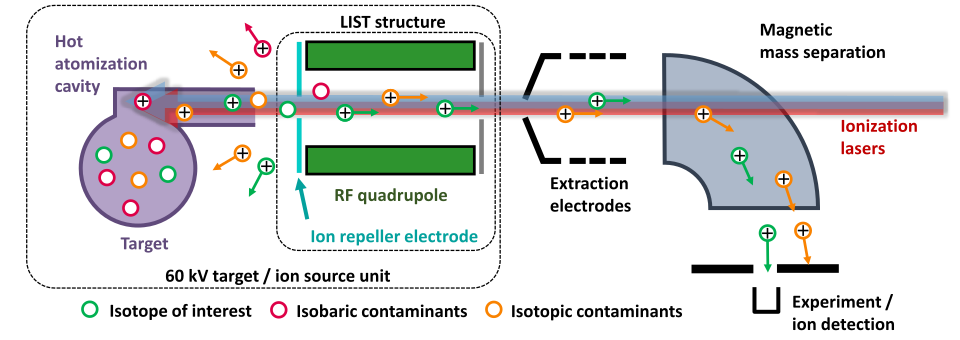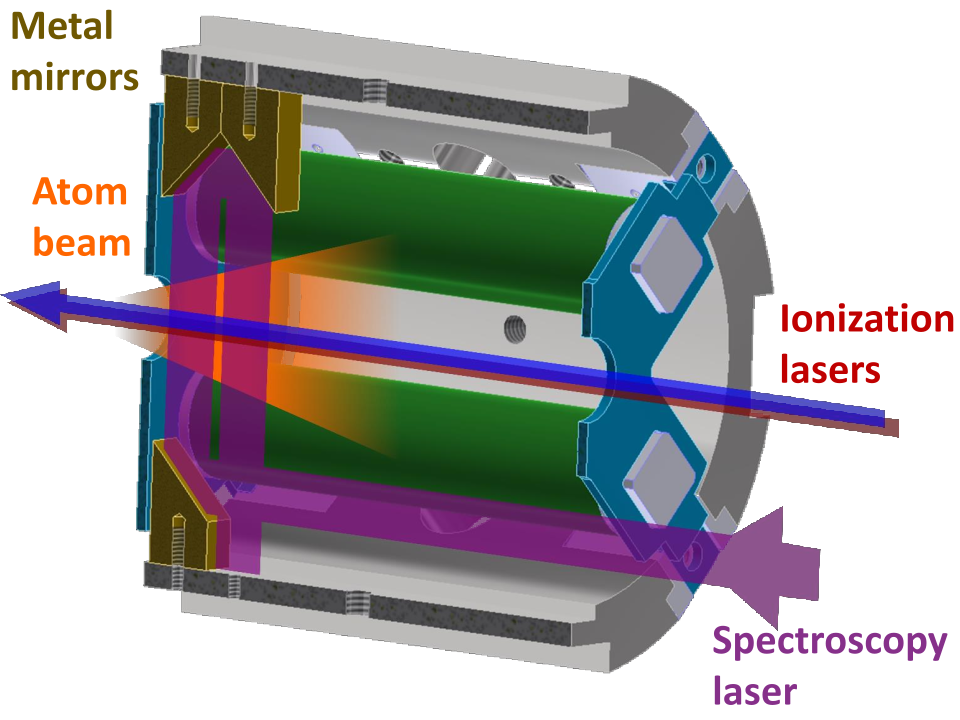Standard ion sources provide high ionisation efficiency and element selectivity by the unique atomic level structure addressable by resonant laser excitation. With subsequent mass separation, the production of isotopic pure ion beams is possible. Nevertheless, the application is limited by ionization mechanisms inside the source competing with the resonant laser excitation. Predominantly, surface ionisation takes place at the walls of the hot atomization furnace, causing especially contamination by elements with low ionization potential, such as the alkaline and alkaline earth metals. If these elements occur as isobars of the isotope if interest, they may overwhelm only poorly produced exotic elements by orders of magnitude in the ion beam. Laser spectroscopic investigations are impossible with this background, as well as subsequent experiments relying on isotope purity.
To overcome this challenge, the custom tailored Laser Ion Source and Trap (LIST) has been developed in the LARRISA group. Its fundamental principle is the geometrical separation of the hot atomization region from a clean laser ionisation volume. The resonant laser ionization takes place within a radio frequency quadrupole structure, confining the ions radially and shielding them from the strong extraction field. The structure is located at the very exit of the atomization cavity, separated by one or more electrostatic electrodes. By choosing appropriate potentials, all ions produced in the hot source are prevented from entering. Only neutral particles can enter the volume and are element-selectively laser ionized. Extraction as an ion beam and conventional subsequent mass separation allows choosing the isotope of interest for experiments or direct detection.
 |
| Principle of the highly selective LIST |
The LIST has been developed especially for operation at CERN-ISOLDE, a facility for ion beam production of exotic radioactive nuclides. It has been used utilized successfully to perform hyperfine structure investigations on neutron-rich polonium isotopes, which were formerly not accessible experimentally, due to the overwhelming contamination by surface ionized francium.
Adaption for high-resolution spectroscopy
The LIST geometry offers an additional opportunity to conduct high resolution laser spectroscopy in combination with a hot atomization source. While in standard operation with direct injection of the laser beams into the cavity the experimental resolution is limited by the Doppler broadening of the resonances in the hot atom vapor, the LIST enables perpendicular crossing of the laser beams and the effusing atom beam inside the quadrupole structure. The width of the velocity distribution in direction of the laser beam is therefore reduced dramatically, improving the spectral resolution from typically a few GHz to below 100 MHz.
 |
| LIST adaption for high-resolution spectroscopy via transversal laser-atom interaction |